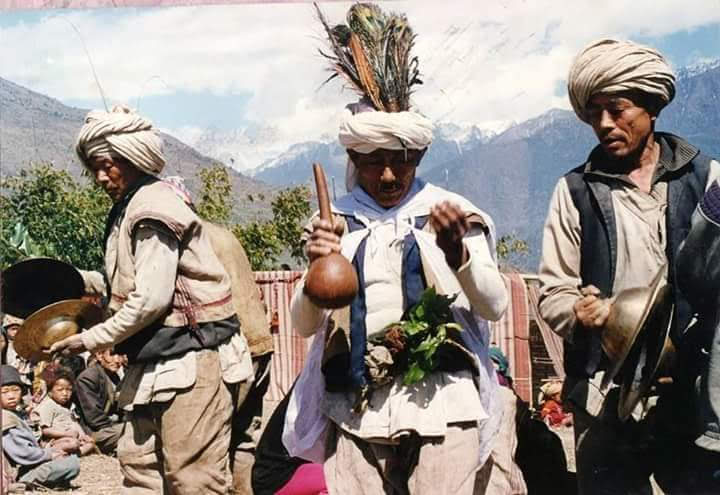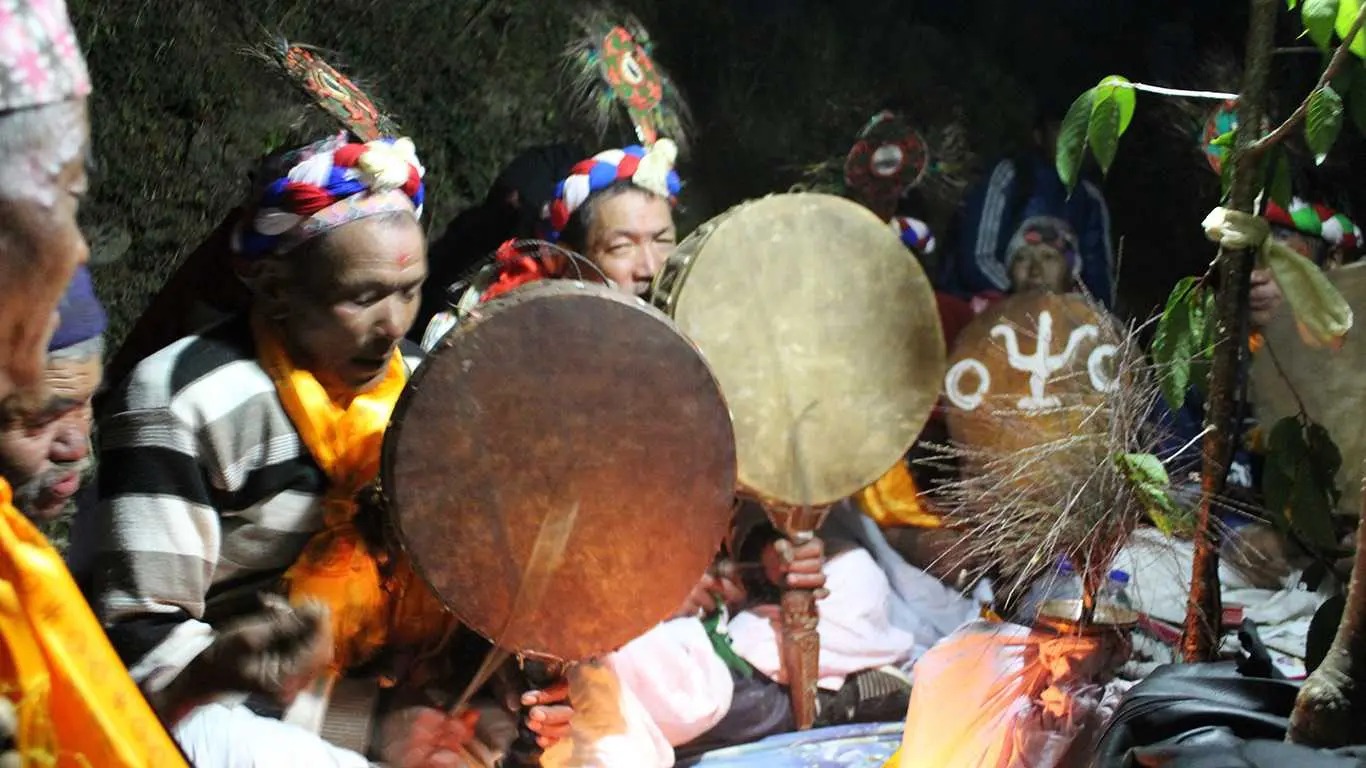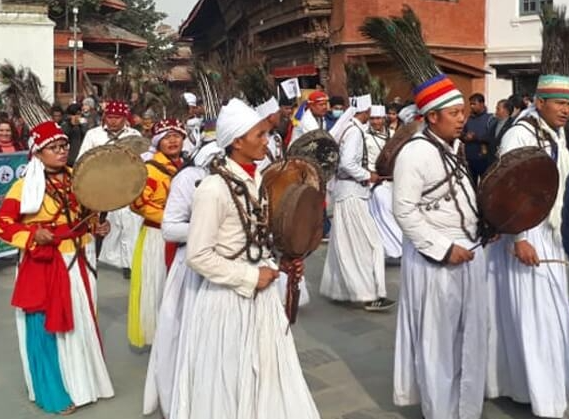
Nepal, a land of towering Himalayan peaks, diverse ethnic communities, and ancient spiritual traditions, is renowned for its rich shamanic heritage. Shaman consultation, led by Dhami or Jhankri, is a sacred practice deeply rooted in Nepali culture. Unlike modern medical consultations, shamanic consultations address both spiritual and physical ailments, social disharmony, and life challenges.
Shamans act as mediators between the human and spiritual realms. Their guidance helps individuals resolve personal issues, heal illnesses, and reconnect with ancestral and natural forces. For centuries, Nepali communities have relied on these spiritual healers to maintain balance, protect against negative energies, and ensure the overall well-being of the family and community.
The Role of Dhami and Jhankri in Nepal
Dhami and Jhankri are the two main types of shamans in Nepal. Both serve as spiritual guides, healers, and ritual specialists, but they differ slightly in their methods:
-
Dhami: Primarily found in the central hills, they often focus on healing illnesses, performing ancestral rituals, and protecting households.
-
Jhankri: Common in Tamang, Gurung, and Sherpa communities, Jhankris specialize in trance communication with spirits, divination, and ritual performance.
Both types rely on their spiritual calling, often signaled by dreams, visions, or unexplained illnesses, which indicate that the spirits have chosen them. Their authority is recognized socially rather than formally; it is rooted in experience, ancestral knowledge, and spiritual connection.
History and Origins of Shaman Consultation in Nepal
Shamanic practices in Nepal predate Hinduism and Buddhism and are heavily influenced by Bon traditions from Tibet. Historically, shamans served as community mediators, healers, and spiritual guides. Over centuries, they integrated aspects of Hindu rituals and Tibetan Buddhist practices, forming a unique Nepali shamanic system.
Shamans have been responsible for:
-
Healing illnesses believed to be caused by spirits or curses.
-
Mediating disputes within families and villages.
-
Performing ceremonies to ensure prosperity, protection, and harmony.
Through oral tradition, shamans preserved ritual knowledge, herbal medicine, and spiritual practices, making them central to Nepali indigenous culture.
Reasons People Consult Shamans in Nepal
People seek shaman consultations for various spiritual, social, and health-related reasons:
-
Health Issues:
Physical or mental illnesses that modern medicine cannot cure are often treated through spiritual healing.
-
Family and Relationship Conflicts:
Shamans mediate disputes, remove curses, and restore harmony.
-
Bad Luck or Misfortune:
Rituals may be performed to cleanse negative energies or appease spirits.
-
Ancestral Guidance:
Consulting shamans helps individuals understand the wishes or messages of deceased ancestors.
-
Spiritual Growth:
Shamans provide guidance for meditation, spiritual awakening, and personal transformation.
The Shaman Consultation Process in Nepal
A typical shaman consultation involves several steps:
Step 1: Initial Assessment
The shaman evaluates the person’s physical, emotional, and spiritual condition. Observation, questioning, and sensing spiritual disturbances help identify the root cause of the problem.
Step 2: Communication with Spirits
Through trance induction, usually achieved via rhythmic drumming, chanting, or ritual music, the shaman communicates with spirits, deities, or ancestors to gather insights.
Step 3: Diagnosis and Recommendations
The shaman provides guidance based on the spiritual messages received. Recommendations may include:
Step 4: Healing Rituals
Shamans perform ceremonies tailored to the individual’s needs, such as:
-
Soul retrieval for lost or disturbed souls
-
Exorcism of negative energies
-
Offerings to spirits to appease them
-
Purification ceremonies for households or workplaces
Step 5: Follow-up Consultation
Many issues require multiple sessions. Shamans also advise clients on daily practices, rituals, and spiritual awareness to maintain balance.
Tools and Rituals Used in Shaman Consultation
Shamans in Nepal use a variety of ritual instruments and practices:
-
Drums and Bells: Induce trance and communicate with spirits
-
Masks and Costumes: Symbolize deities and spirits
-
Herbs and Sacred Plants: Used for healing and purification
-
Offerings: Rice, butter lamps, incense, and alcohol
-
Chants and Mantras: Channel spiritual energy and invoke protection
These tools help the shaman connect with spiritual realms, diagnose problems, and restore balance.
Types of Shamanic Healing
Physical Healing
-
Use of medicinal herbs, poultices, and teas
-
Integration of ritual chants to enhance healing
Psychological Healing
Spiritual Healing
-
Removal of negative energies or curses
-
Reconciliation with ancestors and spirits
-
Protective rituals for homes, businesses, and families
Shaman Consultation Across Nepali Communities
Shaman practices vary among communities:
-
Tamang: Emphasis on Bon Shamanism, nature reverence, and ancestral worship
-
Gurung: Focus on trance rituals, healing ceremonies, and divination
-
Sherpa: Rituals often integrate Tibetan Buddhist prayers and mantras
-
Magar and Rai: Community-centered ceremonies for protection, health, and prosperity
Despite differences, all share core elements of spirituality, healing, and harmony with nature.
Cultural and Social Significance of Shaman Consultation
Shaman consultation is more than spiritual guidance:
-
Preservation of Tradition: Maintains ancient rituals, folklore, and cultural identity
-
Conflict Resolution: Shamans mediate disputes and restore communal harmony
-
Environmental Stewardship: Respect for nature in rituals encourages ecological balance
-
Community Cohesion: Rituals and ceremonies strengthen social bonds
Modern Challenges and Adaptation
Despite its cultural importance, shamanism faces challenges:
-
Urbanization: Younger generations migrate to cities and disconnect from traditions
-
Modern Medicine: Reduced reliance on spiritual healing
-
Cultural Misunderstanding: Outsiders may view practices as superstition
Adaptations include:
-
Workshops and cultural programs
-
Documentation of rituals and practices
-
Integration of shamanic consultation with tourism for cultural education
Shaman Consultation for Tourists
Nepal’s spiritual tourism has grown in recent years. Visitors can experience authentic shaman consultations in:
-
Kathmandu Valley: Accessible shamans for urban visitors
-
Helambu, Rasuwa, and Langtang: Traditional Tamang and Gurung communities
-
Pokhara and surrounding areas: Combined cultural and healing experiences
Tourists can participate in ritual observation, meditation guidance, and wellness-focused consultations, providing cultural immersion and spiritual insight.
Shaman consultation in Nepal is a living spiritual tradition that combines healing, guidance, and cultural preservation. It bridges the physical and spiritual realms, offering insights, protection, and harmony to individuals and communities. Despite modern challenges, shamanic practices continue to thrive, especially in rural and indigenous areas, reflecting Nepal’s rich spiritual heritage and reverence for nature, ancestors, and unseen forces.
Whether for healing, guidance, or cultural experience, consulting a Dhami or Jhankri provides a unique and profound connection to Nepal’s ancient spiritual wisdom.
If you are interested in experiencing or becoming a Shaman (Dhami/Jhankri), contact us on WhatsApp: +9779866551703


